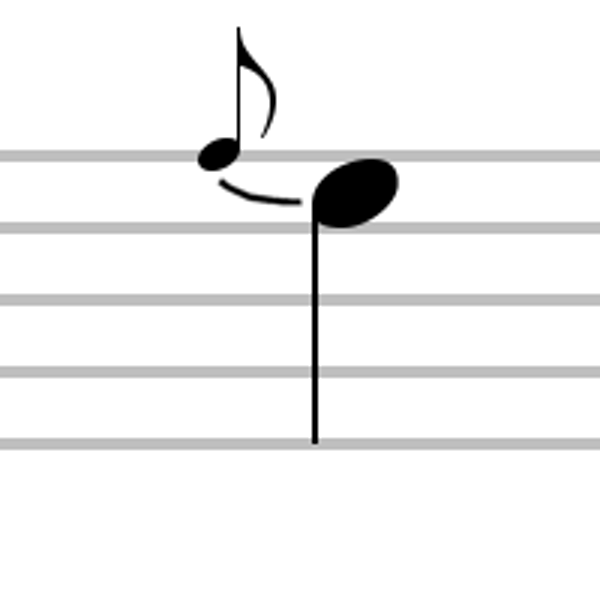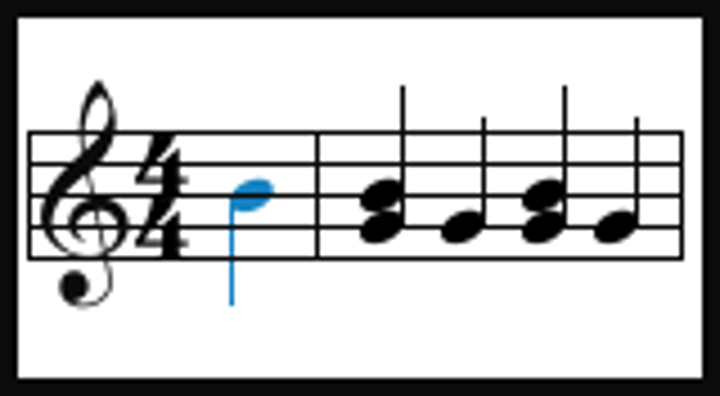Eduqas Music GCSE - Bach - Badinerie
1/43
Earn XP
Description and Tags
Name | Mastery | Learn | Test | Matching | Spaced |
|---|
No study sessions yet.
44 Terms
Who composed Badinerie?
Johann Sebastian Bach
What country did J. S. Bach come from?
Germany
Which era of music was this piece written in?
Baroque
When was Badinerie written?
Between 1738-1739
What is the name of the suite?
Orchestral suite No.2 in B minor
What movement is the badinerie?
The seventh
Name other movements
1. Overture
2. Rondeau
3. Sarabande
4. Bourrée I and II
5. Polonaise
6. Menuet
(Then the Badinerie)
What instrument mostly plays the melody?
Flute (transverse)
Though it is also heard in the cello and on occasion, first violin
What type of ensemble accompanies this piece?
String orchestra
What instrument plays the basso continuo?
Harpsichord (and cello)
What does basso continuo mean?
Continuous, improvised bass line and chord
Describe the tempo of this piece
Allegro (fast)- not marked on the score
Describe the dynamics in Badinerie
Mostly forte, including use of terraced dynamics.
What are terraced dynamics?
Abrupt changes of dynamic level
What is the metre of the piece?
2/4 simple double time
What is the overall form of Badinerie?
Binary (AABB)
Each section is repeated twice
How many bars long is the A section?
16
How many bars long is the B section?
24
What is the home key of this piece?
B minor
What key does Badinerie modulate to?
F# minor
What are all the keys presented in section A?
B minor - A major - F# minor
What are all the keys presented in section B?
F# minor - E minor - D major - G major- B minor
How is F# minor related to B minor?
The dominant minor
Describe the X motif in Badinerie (3)
• Descending B minor arpeggio/ broken chord
• Quaver/ semiquaver rhythmic pattern
• Played by the flute
Describe the Y motif in Badinerie (4)
• Almost entirely semiquavers
• Combines ascending disjunct and descending conjunct movement
• Consisting of arpeggios/broken chords
• Also played by flute, answers motif X
What is the texture of Badinerie?
Homophonic (melody and accompaniment)
What is a sequence?
repetition of a melodic pattern at a higher or lower pitch
What are the 2 types of cadence used in Badinerie?
Perfect and imperfect
What is an appoggiatura?
a grace note which delays the next note of the melody, taking half of it's value

What clef does the viola use?
alto clef
What chords form a perfect cadence?
Chord V-I
What chords form an imperfect cadence?
Chord I-V / IV-V
What rhythmic device does Badinerie begin with?
Anacrusis
What is an anacrusis?
an upbeat

What is a pedal note?
a tone, usually in the bass range, that is sustained through several changes of harmonies
What is modulation?
a change of key within a piece of music
Describe the rhythm in the piece (2)
• Simple ostinato rhythms are used throughout, seen in motif X and Y.
• Note values are mainly quavers and semiquavers.
Describe the general texture
• Homophonic (melody and accompaniment)
• Melody is played by the flute, although also heard in the cello and on occasion, the 1st violin
• Violin 2 and viola generally provide the supporting harmony
Describe texture in each section (3)
• Short countermelody in the flute and then in viola 1 (b 6-8)
• Imitation between the outer parts - flute and cello (b 16-22)
• Textural interplay between the flute solo and strings (b32-40)
Describe the melody in section A
• Begins with an anacrusis
• Motif X starts, answered by motif Y
• Arpeggio/ broken chords
• Disjunct movement
• Ornaments - trills
• Devices - sequence (violin 1)
• Lower auxiliary notes (violin 1 b 6^1 and 8^2)
Describe melody in section B
• Some modifications to the rhythm
• Ornaments - appoggiaturas and trills
• Devices - sequence (flute)
• Lower auxiliary notes
• Development of motif X
• Some changes to the lunch shape (e.g, through inversion)
The harmony throughout the piece is...
Diatonic
Describe the harmony in section A
• Modulates from the tonic (B minor) to the dominant minor (F# minor) in b.12
• Also modulates to A major (b8)
• Rate of chord change varies
• Mix of root position, first and second inversion chords
• V7 chords (b7) in root position and inversion
• Suspensions (b8^1 and 10^1)
• Perfect cadences (b4, 12 and 16)
• Imperfect cadences (b 10)
Describe the harmony in section B
• Modulates from the dominant minor back to the tonic key (b32)
• Other modulations include E minor (b20), D major (b24) and G major (b25)
• Harmonies change quickly, with an active bass line changing chord positions.
• Includes root positions, first and second inversion chords.
• V7 chords in root and inversions (b21-22^2)
• Diminished chord (b18^2)
• Suspensions (b32^1)
• Neapolitan 6th chord (b35)
• Perfect cadences (b20, 24, 28, 32, 38, 40)
• Imperfect cadences (b20^2-21, 29-30, 35-36)